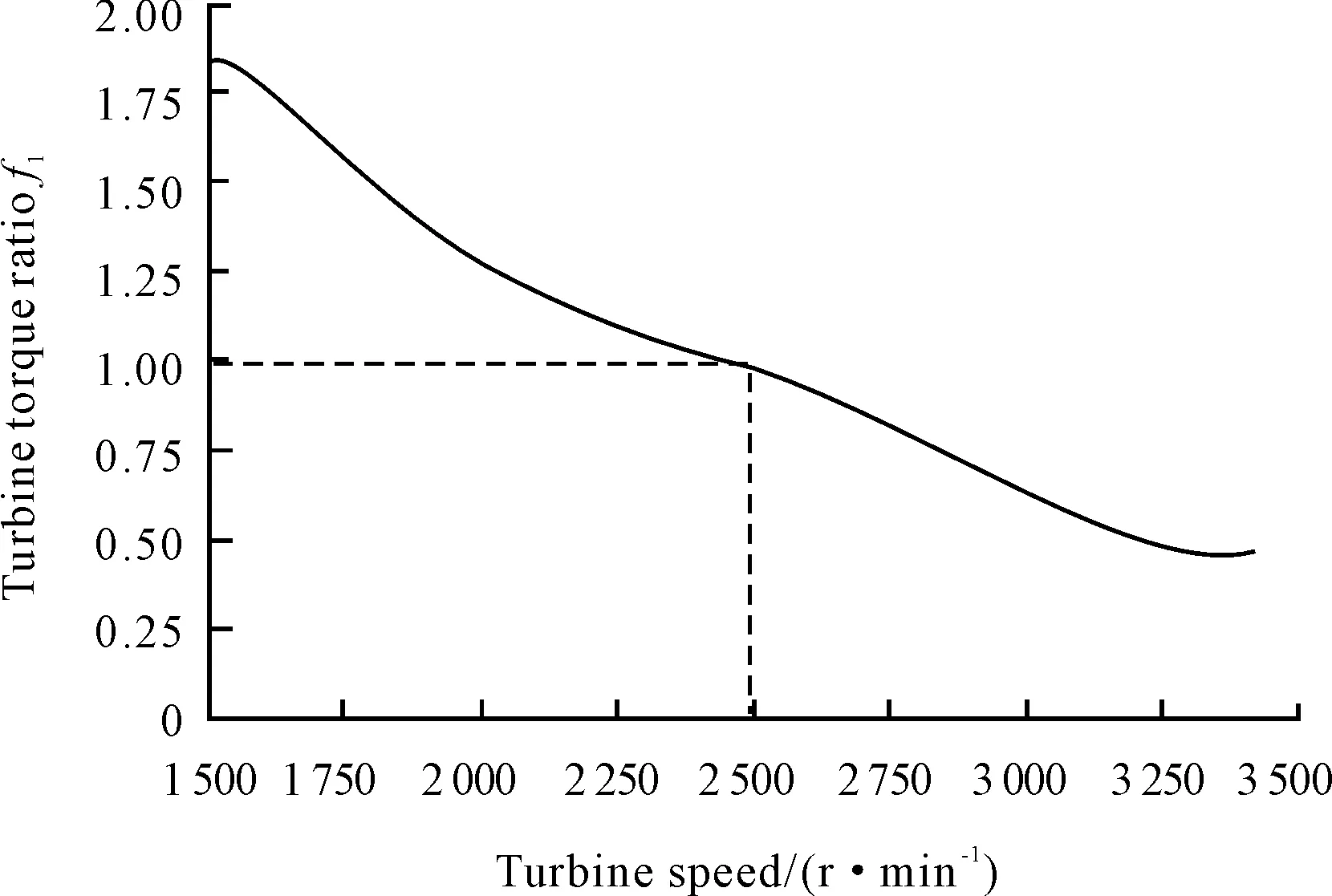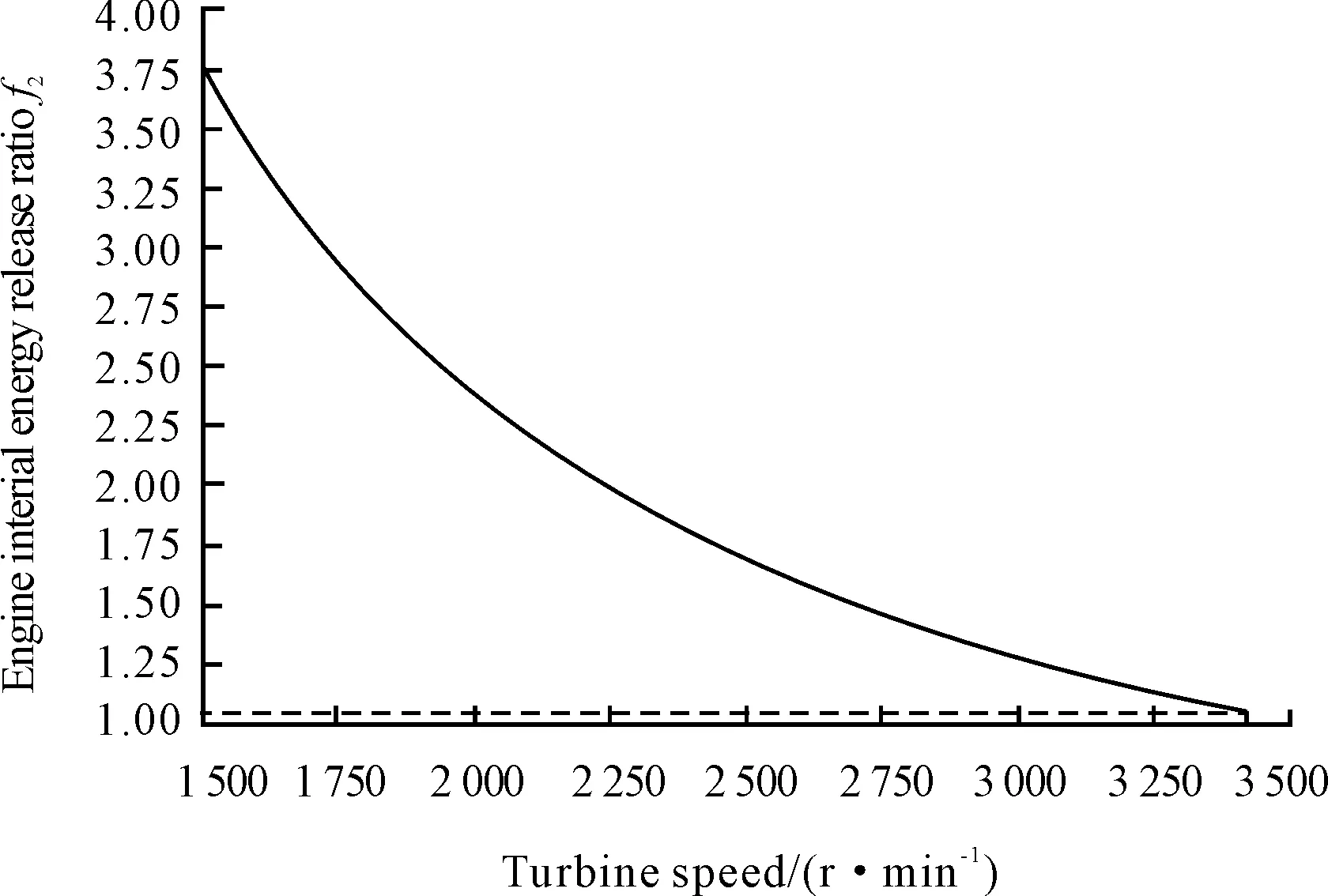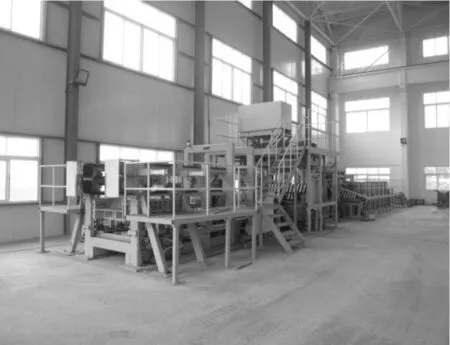A Weight-based Optimization Method of Lockup Quality for an Automotive Hydrodynamic Torque Converter
YAN Qingdong, YANG Aihua, LIU Shucheng, WEI Wei
School of Mechanical Engineering, Beijing Institute of Technology, Beijing 100081,China
AWeight-basedOptimizationMethodofLockupQualityforanAutomotiveHydrodynamicTorqueConverter
YAN Qingdong, YANG Aihua*, LIU Shucheng, WEI Wei
SchoolofMechanicalEngineering,BeijingInstituteofTechnology,Beijing100081,China
Inordertoimprovethelockupqualityofhydrodynamictorqueconverters,thispaperoptimizedthelockuppointofanautomotivehydrodynamictorqueconverter.Thispapertooktheinfluencesofturbinetorquechangesandengineinertialenergyreleaseonlockupqualityintoconsideration.Onthebasisofgoalprogrammingmethod,thepreviousunifiedobjectivefunctionwasmodifiedaccordingtotheinfluencesatdifferentturbinespeeds,aweight-basedunifiedobjectivefunctionwasputforward,andareasonablelockuppointwasobtained.ThelockupperformancesimulationmodelofahydrodynamictorqueconverterwasbuiltinMatlab/Simdriveline,andthesimulationwasconductedinthestudy.Thesimulationresultsshowthattheoptimizedlockuppointismorereasonablethanthepreviousone.
fluidpowertransmissionandcontroltheory,hydrodynamictorqueconverter,lockuppoint,unifiedobjectivefunction
On the basis of hydrodynamic torque converter, lockup hydrodynamic torque converter has both the advantages of hydrodynamic transmission and the characteristics of high efficiency of mechanical transmission, and it also ensures both vehicle power and economy, by adding a lockup clutch[1]. Due to the changes of turbine torque and the release of engine inertial energy, which are delivered to transmission system in the form of torque vibration, the lockup impact is formed. A great many researches[2-6] show that making a reasonable lockup point is of great research importance to decrease lockup impact and improve the lifetime of transmission system as well as riding comfort, because the frequency of lock/unlock process[7-8] is very high.
Taking the effects of turbine torque change and engine inertial energy release on lockup quality into consideration, this paper researches on the lockup quality of a certain hydrodynamic torque converter and presents the lockup point optimization design model.
1.Traditional lockup point design model
In the hydro-mechanical transmission, the method of traditional two-parameter lockup point design is that the intersection point of turbine output torque curves of both hydrodynamic and mechanical conditions is used as the lockup point at a certain throttle opening, according to the equivalence principle of turbine output torques of the two conditions before and after lockup, as shown in Fig.1.
Theoretically, the power is considered being transferred without interruption and the lockup impact is very small, because of the equality of turbine output torques both before and after lockup. But due to the sudden decrease of engine speed, large quantity of engine inertial energy is released, causing great impact to the transmission system, which means that the lockup quality is still very poor.

Fig.1 Traditional lockup point design
2.Lockup point optimization design model
Given conditions: engine net external characteristic, hydrodynamic torque converter original characteristic, and relevant parameters of powertrain.
Optimization interval: turbine speednAunder mechanical conditionA, and turbine speednCunder hydrodynamic conditionC, namely [nA,nC].
2.1.Turbinetorquechangesbeforeandafter
lockup

(1-a)
(1-b)
(1-c)
Where,ρis the density of working oil, gis the acceleration of gravity, andDis the effective diameter of circulatory circle.
And then turbine torque can be described in the following.
(2)
Under mechanical condition, when the impeller and the turbine are locked together, the output speed and torque of both impeller and turbine are the same, which is expressed by the following equation.
(3-a)
(3-b)
(3-c)
Where,iqis the front drive ratio,MEis the output torque of engine which can be calculated as the following equation
ai(0≤i≤4) andbj(j=0,1) are the fitting coefficients of engine,nEis the engine speed, andnmin、nN、nmaxare the lowest stable speed, rated speed and the highest speed of engine respectively.
And then turbine torque can be described by the following equation.
(4)
Turbine torque change ratio before and after lockup can be defined as the following function, recorded as the first objective function.

(5)
2.2.Engineinertialenergyreleasebeforeandafterlockup
Under hydrodynamic condition, inertial energy restored by engine can be calculated as follows.
(6)
(7)
Under mechanical condition, the inertial energy restored by engine can be calculated as follows.
(8)
(9)
The engine inertial energy release ratio before and after lockup can be defined as the following function, recorded as the second objective function.

(10)
2.3.Modifiedunifiedobjectivefunction
According to the optimal design theory, multi-objective function can be transformed to single objective function to simplify calculation. During the process, target programming method can make these objective functions achieve their optimal values consistently[9]. By analysis, when the first objective function obtains optimal value at traditional lockup point, the second objective function may not achieve its optimal value. If two objective functions obtain optimal values at the same time, these two functions need to make a concession in order to achieve the overall best.
A common unified objective function is shown as follows.
(11)
Whenf1(N) andf2(N) achieve its optimal value respectively,f(N) can obtain its optimal value.
However, this unified objective function doesn’t take the contribution of these objective functions into consideration. So the objective function should be modified by adding weighting factors. Weighting factors are changing with turbine speeds, and the principle of weight changes is that when the turbine speed is closer to its optimal value, the corresponding objective function contributes less to the unified objective function. Then unified objective function considering weighting factors can be expressed as follows.
(12)
(13)

3.Numerical simulation


Fig.2 The First Objective Function


Fig.3 The Second Objective Function
By the three methods, namely, traditional design method, unified objective function method, whose weight can be thought of asψ1=ψ2=1/2, and weight-based unified objective function method, under 100% throttle opening, the lockup points and the corresponding function values are shown in Tab.1, and the curve of weight-based unified objective function value is shown in Fig.4.

Tab.1 The Unified Objective Function Value

Fig.4 The unified objective function based on weights
By analyzing the results, the lockup point determined by weight-based unified objective function is a little bit bigger than the one by unified objective function, but the function value is lower, that is, the lockup quality is improved with lesser engine inertial energy release and smaller turbine torque changes.
4.Model validation
By the idea of modular, the lockup performance simulation model of a certain hydrodynamic torque converter is established in Matlab, including engine module, hydrodynamic torque converter module, vehicle dynamic module and lockup control module. The purpose is to compare the influence of the lockup points determined by weight-based unified objective function, unified objective function and traditional design method, to both vehicle power and lockup quality, as shown in Fig.5.
When the lockup points determined by these three methods are being verified, the same engine[10] and lockup hydrodynamic torque converter are used, the throttle opening is full, and the characteristic of lockup control oil stays the same, in the same hydrodynamic torque converter lockup performance simulation model. The lockup control parameters are turbine speed and throttle opening.
The influence of lockup points determined by these three methods to vehicle power and lockup quality is shown in Tab.2.

Fig.5 The Lockup Quality Simulation Model of Hydrodynamic Torque Converter

Throttleopening100%TraditionalmethodUnifiedobjectivefunctionWeight-basedunifiedobjectivefunctionEnginetorquevibration/(N·m)andproportion180.03336.76%80.31923.05%31.79351.21%Enginespeedfluctuation/(r/min)andproportion365.617017.99%170.00808.11%68.86773.29%Inertialenergyrelease/(J)andproportion8.7459×10432.73%4.423×10415.56%1.837×1046.46%Turbinetorquevibration/(N·m)andproportion33.13741.81%33.67551.92%6.08490.35%Lockupimpact/(rad/s3)44.109136.041334.6196Peaktorque/(N·m)5794.87054365.58913332.6556Frictionwork/(Nm/m2)4.1453×1041.0162×1041.9128×103Frictionpower/(kW/m2)997.7324359.2517108.9797
Seen from the simulation results, the changes of engine torque, speed and inertial energy release before and after lockup, which are determined by weight-based unified objective function, are smaller, compared with those determined by unified objective function and traditional method. In the meantime, the lockup impact, the peak torque, the friction work and the friction power also decrease. The friction power, the engine inertial energy release and the turbine peak torque, determined by weight-based unified objective function are decreased by 89.08%, 79.00% and 42.49%, respectively, compared with these determined by traditional method, and are decreased by 63.66%, 58.47% and 23.66%, respectively, compared with these determined by unified objective function. So lockup quality is improved.
Taking throttle opening and turbine speed as control parameters, lockup points at different throttle openings are established by the way of weight-based unified objective function. The lockup law of hydrodynamic torque converter is shown below in Fig.6.

Fig.6 The lockup law at different throttle openings
As it can be seen from Fig. 6, the lockup law established by weight-based unified objective function is about 100 r/min bigger than those established by both traditional method and unified objective function, which means that mechanical condition is narrower. However, the vehicle lockup quality has been improved greatly, with the decreases of lockup impact by 4% and friction work by 80%.
5.Conclusions
1) When the hydrodynamic torque converter locks up at different turbine speeds, the turbine torque changes and the engine inertial energy release have different effects on lockup quality, which should be taken into account reasonably. It is not feasible to consider simply that the two effects on lockup quality are the same, when the lockup points are made.
2) By the way of unified objective function, considering the effects of both turbine torque changes and engine inertial energy release on lockup quality at different turbine speeds, ideal lockup points can be obtained so that it improves the lockup quality. The research result shows that the new method is reasonable and feasible.
[1] GUO Xuexun,ZHENG Muqiao,XIANG Changle.Transient Characteristics of Torque Converters in Vehicles During the Locking-up Process[J].Journal of Beijing Institute of Technology,1994,14(3):273-279.
[2] YE Dan,HUANG Haidong,ZHAO Dingxuan,et al.Study on Shift Schedule for Increasing Output Power of Hydraulic Torque Converter[J].Transactions of the Chinese Society of Agricultural Machinery,2005,36(3):15-18.
[3] CHEN Qinghong,QIN Datong,YE Xin.Optimal Slip Control about Lockup Clutch of Torque Converter[J].China Mechanical Engineering,2009,20(22):2663-2667.
[4] ZHANG Bingli,SONG Zhenxiang,ZHAO Han.Simulation of torque converter locking performance based on Simulink [J].Journal of Hefei University of Technology,2010,33(9):1281-1284.
[5] Simulation Research of the Influences of Locking Moment of Hydraulic Torque Converter on Dynamic Characteristics of Drive System[J].Construction Machinery and Equipment,2007,38(4):53-57.
[6] HU Jianjun,QIN Datong,JIANG Xiaohua.Performance and Slip Control of Torque Converter Lockup Clutch[J].Journal of Chongqing University :Natural Science Edition,2004,27(2):2-5.
[7] ZHANG Zhikai,LIU Baoduo.Design of Throttle Pressure Characteristic of the Converter Lock-up Clutch[J].Acta Armamentarii (the Volume of Tank,Armored Vehicle and Engine),2000 (3):37-42.
[8] GE Anlin.Automatic Transmission(3)—Lock of Hydraulic Torque Converter and Control of Sliding Difference[J].Automobile Technology,2001(7):1-4.
[9] MA Chao,XIANG Changle,LIU Hui.Optimization Design of Lockup Point of Hydraulic Torque Converter[J].Beijing Automotive Engineering,2004(5):8-13.
[10] WU Feng,WANG Zengquan,HOU Xinrong.The Performance Study of an 8V150 Turbocharged and Intercooled Diesel Engine[J].Neiranji Gongcheng,2003,24(1):62-69.
IntroductionoftheFluidControlEngineeringInstituteofKunmingUniversityofScienceandTechnology
The Fluid Control Engineering Institute of Kunming University of Science and Technology was set up in 1996. The researches of institute concentrate on electro-hydraulic(pneumatic) servo/proportional control and hydromechatronics. The Institute is committed to research and development of electro-hydraulic control of high-end technical equipment in ferrous metallurgy refining production. Projects undertaken and participated by the copper electrolysis anode preparation equipment, lead residual anode washing production lines as a host device received the second prize of the National Science and Technology Progress Award in 2009, the first prize and the third prize of the Yunnan Provincial Science and Technology Progress Award and many other awards. The institute has developed and put into operation more than a dozen sets of large equipment, and more than 20 national patents, which have been transformed into related products, providing professional package services of technology and equipment for non-ferrous metallurgical enterprisesAddress:College of Mechanical and Electrical Engineering, Chenggong Campus of Kunming University, 727#,Jingming South Road, Chenggong University City, Kunming City, Yunnan Province
Zip Code:650500
Contact:Sun Chungeng, 13608850651/Liu Sen, 13888749366
一种基于权重的某车用液力变矩器闭锁品质优化方法
闫清东,杨爱华*,刘树成,魏 巍
北京理工大学 机械与车辆学院,北京 100081
为改善液力变矩器的闭锁品质,对某车用综合式液力变矩器闭锁点进行了优化。综合考虑闭锁前后涡轮输出转矩变化与发动机惯性能量释放对闭锁品质的影响,采用目标规划的思想,研究了在不同涡轮转速下闭锁时涡轮转矩变化和发动机惯性能量释放两方面对闭锁品质的不同贡献量,对以往统一目标函数法进行修正,提出一种基于权重的统一目标函数,并基于此方法确定了闭锁点。基于Maylab/Simdriveline建立了某液力变矩器的闭锁性能仿真模型,并进行仿真计算。仿真结果表明,优化后的闭锁点较以往方法设计的闭锁点更为合理。
流体传动与控制;液力变矩器;闭锁点;统一目标函数
TH137
2012-11-27
National Natural Science Foundation of China(50905016), Ministerial pre-research project(40402050202)
*YANG Aihua.E-mail: 13466307020@163.com
10.3969/j.issn.1001-3881.2013.06.008

Fig.1 The copper electrolysis anode preparation equipment
——变矩器的锁止控制
- 机床与液压的其它文章
- Research and Realization of the Control System for Cement Screw Packing Machine Based on MCGS and S7-200PLC
- The Analysis and Countermeasure of Centrifugal Atomizer Nozzle Block Up
- Static and Dynamic Characteristic Analysis for Vehicle MRF Damper
- Multi-physics Coupling of Hydraulic System
- Research of Production Configuration Management Based on the Internet of Things-mixed Cloud Enterprise
- Research and Design of Embedded Serial Device Server on the DNC System

